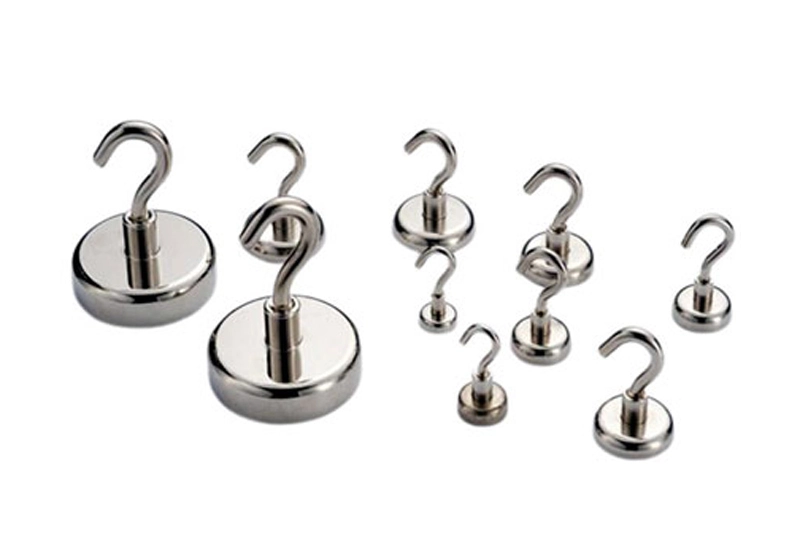Magnet assemblies contain magnetic alloys and non-magnetic materials. Magnet alloys are so hard that even simple features are difficult to incorporate into the alloy. Installation and application-specific functions are easily integrated into non-magnetic materials, which often form housings or magnetic circuit elements. The non-magnetic element will also buffer the brittle magnet material from mechanical stress and increase the overall magnetic strength of the magnet alloy.
Magnet assemblies typically have a higher magnetic force than the magnets themselves, because the flux conducting element (steel) of the assembly is usually an integral part of the magnetic circuit.
Using magnetic induction, these elements will enhance the field of the component and focus it on the area of interest. This technique works best when using magnetic components that are in direct contact with the workpiece. Even small gaps can affect the magnetic force. These gaps can be actual air gaps or any coating or debris that keeps the assembly off the workpiece.
Magnet assemblies can be integrated in a number of ways, and most are mechanical. The most common are press fit (interference) and the use of mechanical fasteners. Press fit components typically use a brass sleeve that is centerless ground for insertion into the hole. Mechanical fastener installation will utilize threaded or through holes included in the assembly.
We offer a variety of standard magnet assemblies in stock. Each component family has distinct advantages and disadvantages, such as: cost, magnetic strength, size, environmental tolerance and operating temperature. All of these variables should be considered when selecting magnet assemblies.
Important considerations when choosing components:
1. Holding force or separation force;
2. Field strength;
3. Working temperature;
4. Dimensional constraints (volume or mass);
5. Cost;
6. Operating environment (humid, acidic, alkaline, etc.).
Our company's magnetic assembly products cover a wide range of types and sizes, including neodymium cup (can) magnets, ferrite (ceramic) cup/can magnets, plastic and rubber coated retention magnets, fishing magnets, various hook magnets, channels magnets, different types of office magnets and more. In addition to regular sized magnet assemblies, the company also completes the machining and assembly of many custom magnet assembly products each year.
With strict material selection control and standardized assembly process, we strive to achieve higher product quality than other manufacturers at the same price, and magnetic magnet components are stronger than other factories of the same scale. We sincerely look forward to cooperating with customers all over the world to develop magnetic components and equipment.

Related Article
Please fill the form to let us know your need. Our sales will get in touch with you ASAP.
Related Products